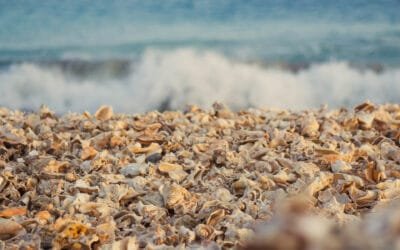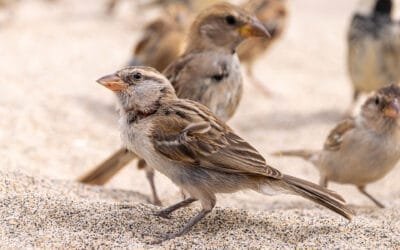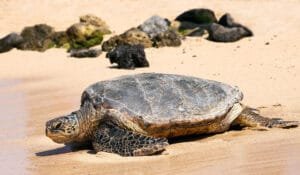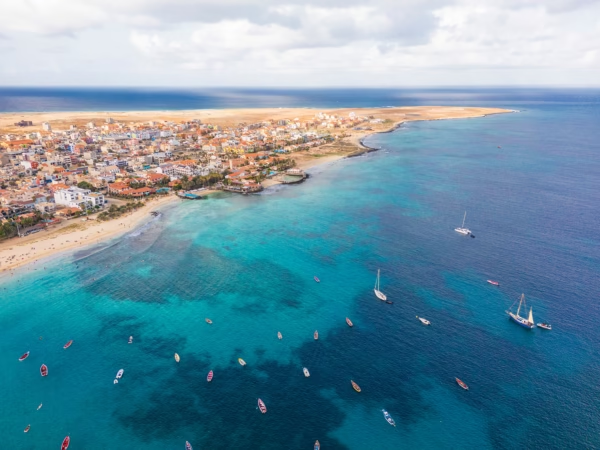Lemon Sharks: Close Look at the Beautiful Species

The lemon shark (Negaprion brevirostris) occupies shallow waters, coral keys and mangrove forests along the Atlantic Ocean and parts of the Pacific. It inhabits and returns to specific nursery sites for breeding, like the Shark Bay of Sal Island – the shallow bay where you can go in the water to see the little lemon sharks closely.
The lemon shark is easily recognisable by the distinct yellow hue of its skin, from which it got its name. It can grow to 3.4 metres in length, which makes it one of the largest shark species in the ocean. It can weigh up to 250 kg and live up to 30 years. Its stocky build and other physical features make it a powerful predator underwater, but it is also a common target of commercial fishers looking to sell and trade the shark’s fins and meat.\
Read also:
- Shark Bay Nursery: Discover the Shallow Coastline Full of Baby Lemon Sharks;
- In-Depth Look at Lemon Sharks: Ecology, Behaviour, and the Role of Shark Bay.

Are lemon sharks dangerous to humans?
Lemon sharks represent a minimal threat to humans. According to the International Shark Attack File, there were only ten unprovoked attacks of lemon sharks (all in Florida and the Caribbean Islands), and none ended fatally. The lemon shark inhabits coastal waters and often lives close to swimmers, surfers and divers but does not attack if not provoked. The number of attacks by species is low, but we advise you to remain cautious as they are a large predatory species (ISAF 2018).
Given that the lemon shark is a target for commercial (meat and leather) and recreational fishing throughout its range and its place on the IUCN Red List as Near Threatened, we can say that humans are much more dangerous to this shark than it is to humans.

Skills and diet of lemon sharks
The lemon shark’s yellow skin colour provides perfect camouflage in sandy in-shore areas where it often forages for food. The colour, flattened head, and short snout make the lemon shark a skilful predator of bony fish, crustaceans and stingrays. Occasionally, it can eat seabirds or even smaller sharks. Often feeding at night, these sharks use electroreception to detect electrical pulses emitted by potential prey. The retina in their eyes has a “visual streak” (a specialised horizontal band), which allows them to see fine detail and colour underwater.
Lemon sharks’ life and social behaviour
Though lemon sharks prefer shallow coastal waters, some individuals are entering freshwater or undergoing migrations through the open ocean. Still, lemon sharks prefer a defined home range and may congregate in groups of up to 20 individuals to feed together overnight. During the day, lemon sharks often rest on the seabed waiting for small fish to clean off parasites from their body. However, this behaviour takes up more energy than swimming as the shark must continually pump water over its gills to breathe.
Lemon sharks create groups based on the similarity of their size. The passive sorting mechanisms, such as ontogenetic habitat change, contribute to the formation of groups based on size or sex. One exception to this behaviour is sharks younger than one year showing no grouping preference. It is advantageous for small, juvenile lemon sharks to stay with older individuals because they can more easily learn from them and gather habitat information about elements such as predators and local prey.
Groups of lemon sharks form because of an active desire to be social rather than simple protection reasons or attraction to the same limited resources. Many studies have linked brain size to complex social behaviour in mammals and birds. The brain of the lemon shark, being comparable in relative mass to that of a mammal or bird, suggests that they can learn from social interactions, cooperate with other individuals and have the potential to establish dominance hierarchies and stable social bonds.

Reproduction
The lemon shark is viviparous, which means it gives birth to live young rather than eggs. Embryos develop inside the mother for up to 12 months until the female seeks shelter in a shallow nursery during spring or summer to give birth. A litter of lemon sharks may be as large as 17. Baby sharks measure around 50-60 cm in length at birth. They remain in the nursery for several years, sheltered in the safe shallows from larger predators, and feed on nutrients from nearby mangroves, slowly growing bigger and bigger. Lemon sharks reach sexual maturity at around 6th year of life and may live for up to 27 or even 30 years.

Bibliography / Sources
- Lemon Shark (Negaprion brevirostris) on IUCN Red List of Threatened Species;
- Map: Distribution map for Negaprion brevirostris by Chris_huh, CC BY-SA 3.0, via Wikimedia Commons;
- Zoologer: Social shark that doesn’t look like a lemon by Michael Marshall on the New Scientist portal;
- Shark Cannibalism: It’s A Thing And It Just Got Weirder by Melissa Cristina Márquez for Forbes;
- Shark Research in the Northeast by NOAA (National Oceanic and Atmospheric Administration) Fisheries of U.S. Department of Commerce;
- Negaprion brevirostris by Alexia Morgan for Florida Museum website;
- Lemon Shark (Negaprion brevirostris) on Ocean Conservancy website;
- Lemon Shark (Negaprion brevirostris) on Marine Bio website;
- Lemon shark on Wikipedia, The Free Encyclopedia;
- Lemon shark on the Oceana website;







